
Reimagining the Inflight Service Ecosystem
Jan 2020 - Dec 2020
Safran Cabin Innovation
Strategic design, System thinking
2020 was (also) a challenging year for aviation. This strategic project as part of the Safran Cabin company, led our team to look at the micro and macro factors that would shape the future of the industry.
Initiative
Since air travel became widespread, inflight services (meals, duty-free sales, and other onboard offerings)
have operated within a largely unchanged product-service ecosystem. Safran has long been a leader in key
products like trolleys and galleys.
However, today’s industry faces growing competition, evolving airline business models, and a wave of
technological innovations seeking to add value.
Role & ambition
As part of Safran Cabin Innovation, I led context research, developed a vision and strategy, and created
value propositions. My visual skills facilitated communication with stakeholders, from marketing to upper
management.
The project aimed to drive breakthrough innovations, enhance Safran’s competitive edge, and
maintain its industry leadership.
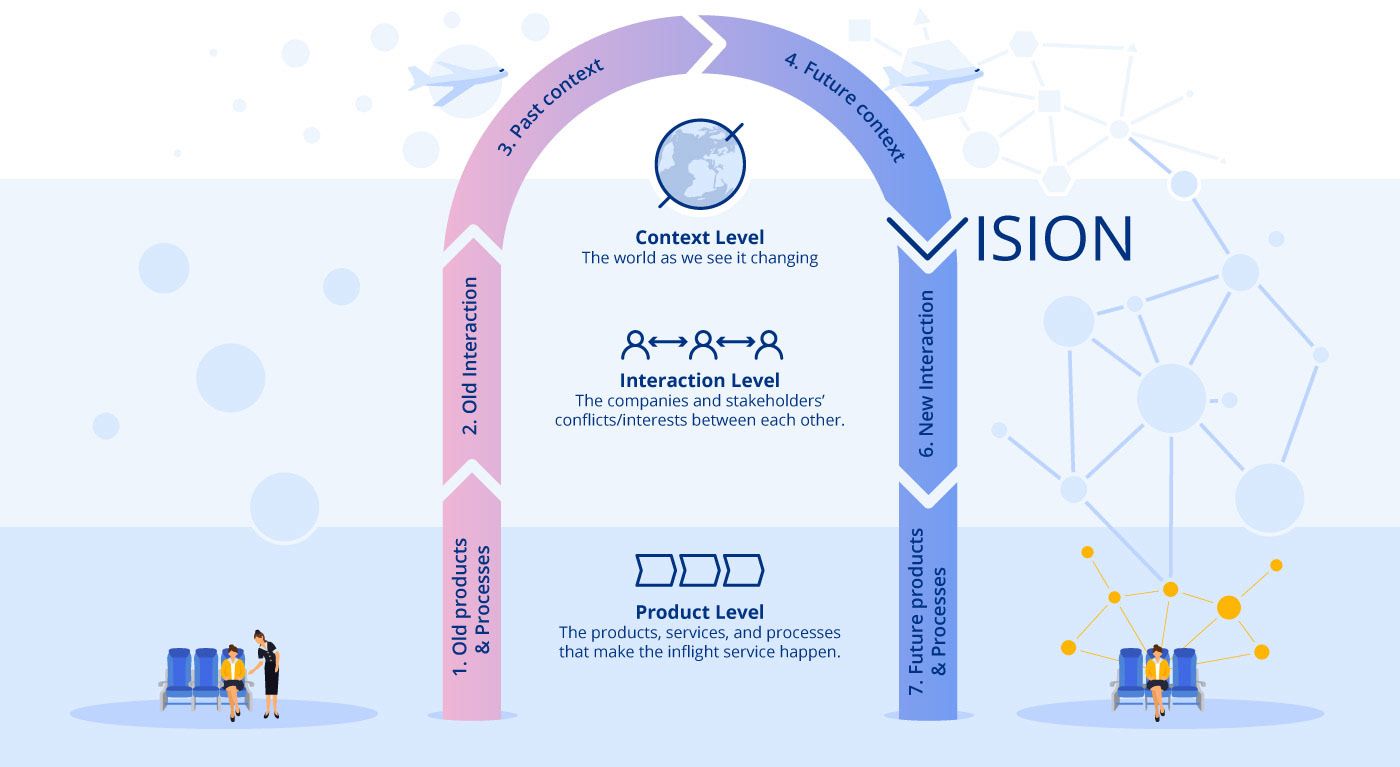
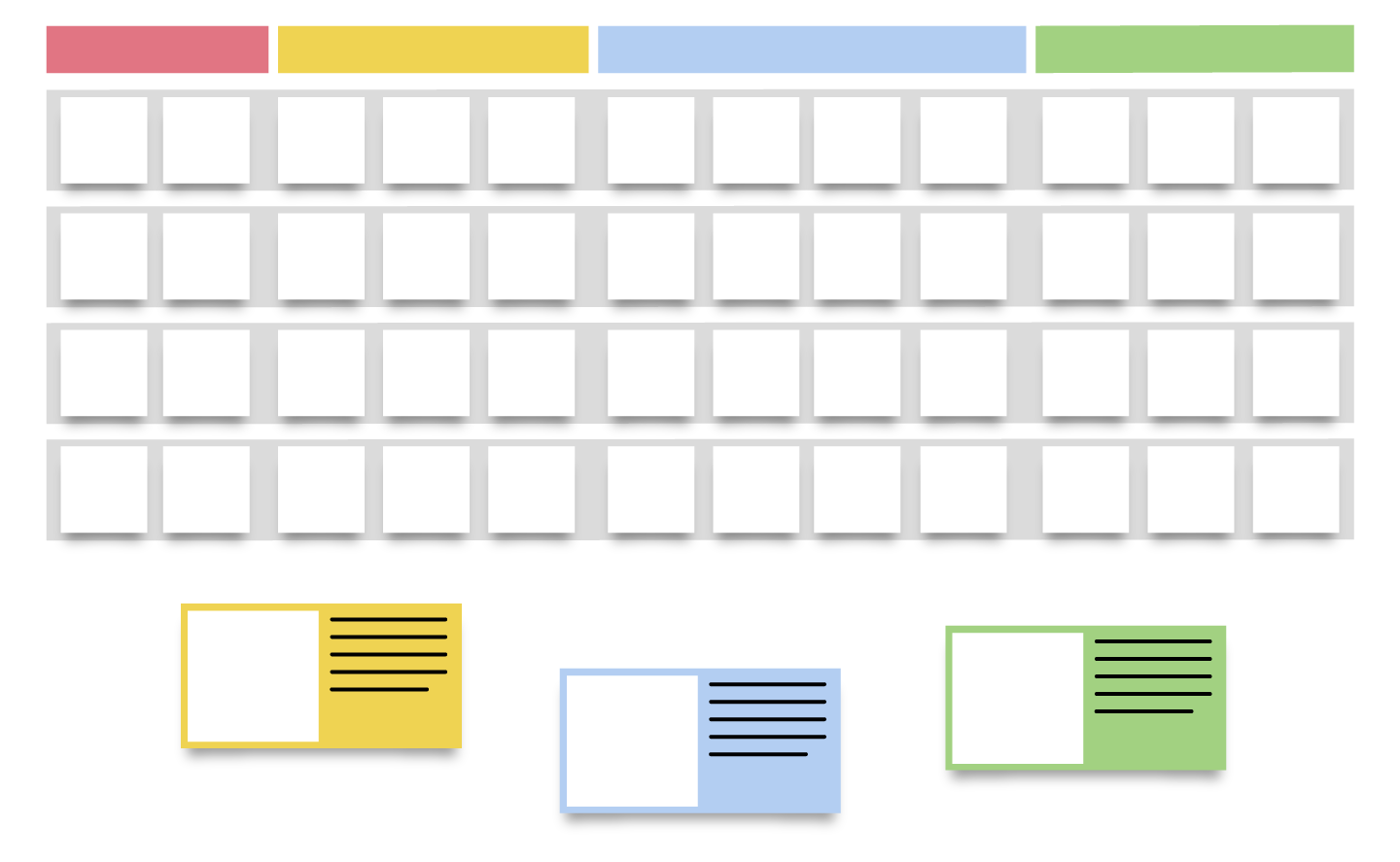
➀ Products and processes study
We first conducted a detailed study of all related processes, from the backend processes (at the catering company, ...) to the onboard service itself (safety, duty-free, meal and drink services), and other logistical operations (meal and equipment supply chains). We finally created a detailed service blueprint and use cases of all relevant products and activities.
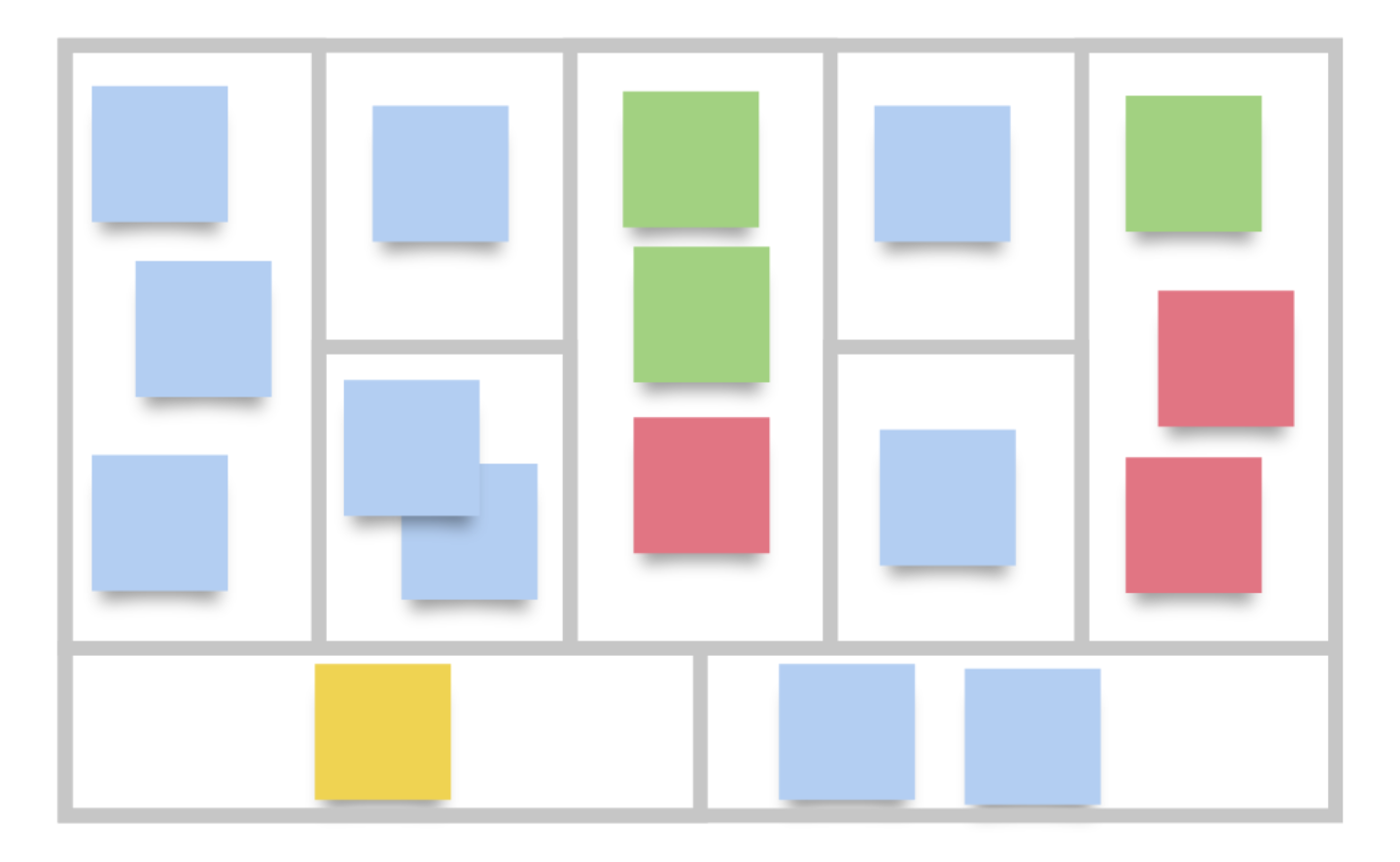
➁ Stakeholder & ecosystem analysis
By interviewing experts and several stakeholders, we were able to map and highlight their needs, powers, and interests to one another. We made use of stakeholder maps, customer profiles (combined with value propositions), and Business Model Canvases to organize and share our insights.
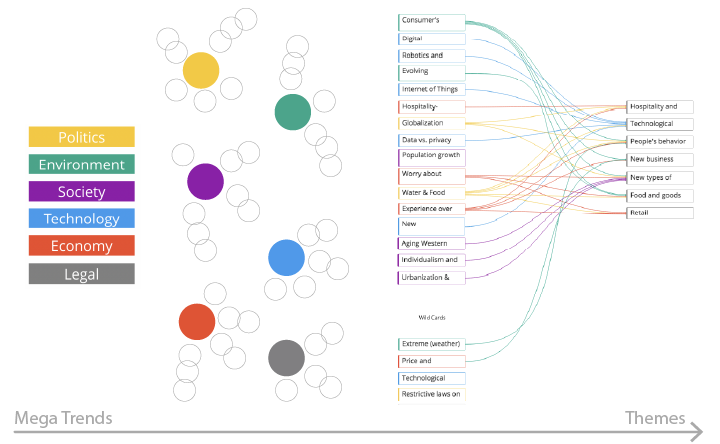
➂ Macro & Micro trend research
Using the scenario planning method and interviewing experts to get valuable insights, we analyzed the mega-trends of the world, the mezzo-trends of the aviation industry as well as the micro-trends of our societies, and we translated them into drivers of change that could shape the context of the future ecosystem and change the stakeholders' behavior, business and processes. We also used environment maps to identify trends affecting each stakeholder's business and produced a report to share our insights.
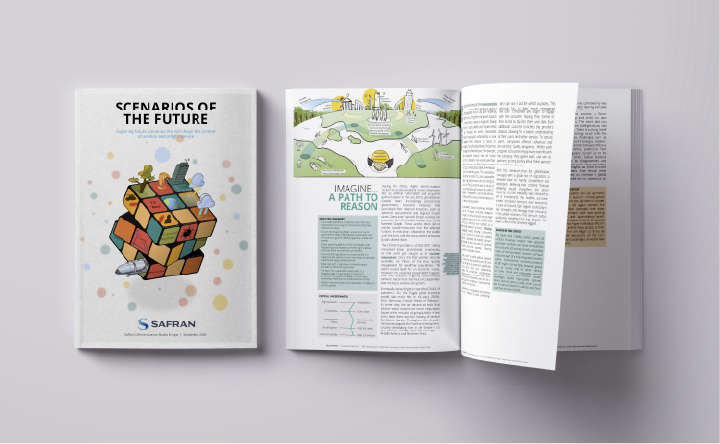
➃ Scenario planning
We translated the drivers of change (based on ongoing worldwide and industry trends) into 3 distinct, yet possible, scenarios of the future of the world and their impacts on the Industry, using the same themes to compare them. We finally produced a magazine illustrating and narrating our 3 scenarios and shared it with different business units.
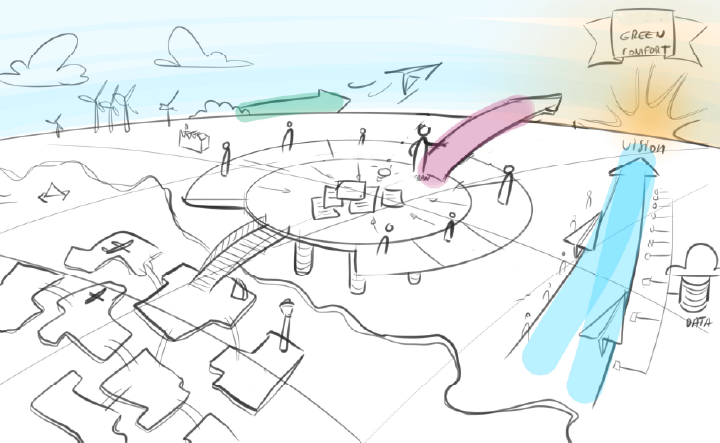
➄ Company Vision and Project Mission
From our research efforts and our 3 scenarios, we defined 3 distinct ambitions for Safran's future ecosystem role as well as five 'actionable objectives'. An innovation vision was formulated from these, which is now used both to streamline existing R&D projects and as guidance for developing new value propositions within RISE.
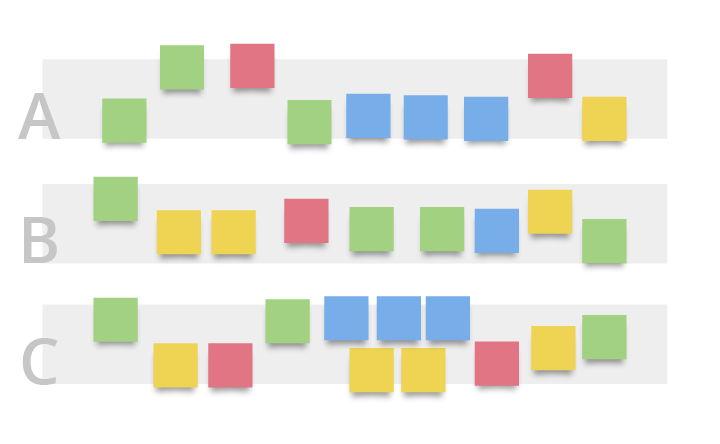
➅ Ecosystem innovation and value proposition design
Later on, we created new Value Propositions based on future profiles of our customers. This allowed us to imagine first products and services fulfilling future needs and interests. We used the 3 ambitions to direct our ideas towards the company vision and we produced different user journeys and storyboards to present our ideas to the management and the marketing team.
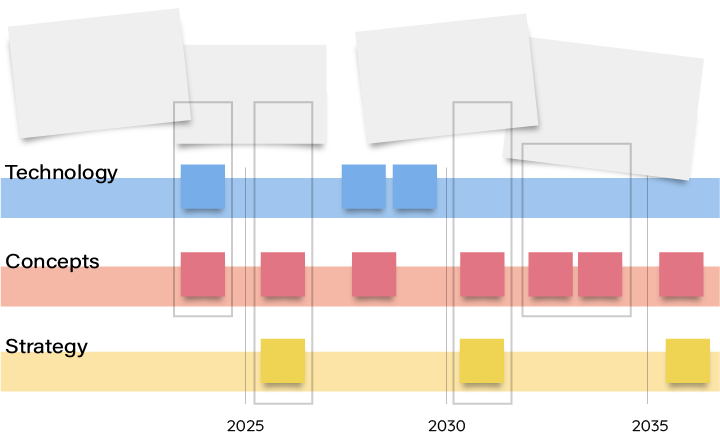
➆ Innovation roadmap
We turned the value propositions into comprehensive and well-rounded concepts for future products and services. Ultimately, an innovation roadmap was created to align the existing Safran Cabin strategy with our inputs. We finally presented our insights and concepts to the upper management of Safran Cabin, to the marketing team, and to the R&T teams of the relevant Business Units.
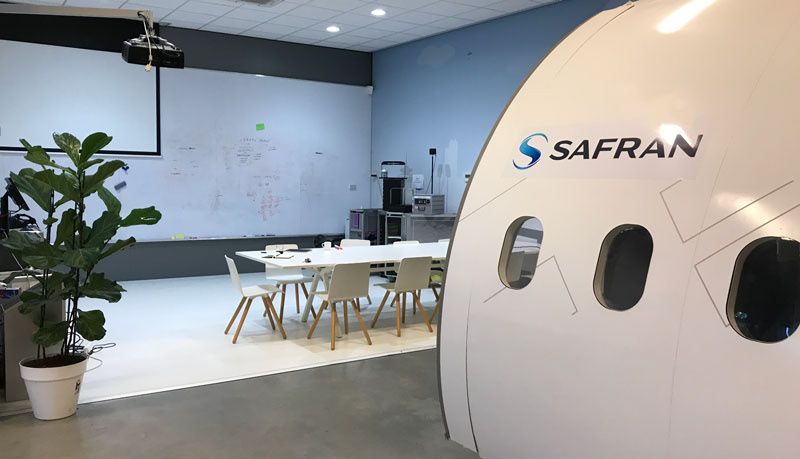
Project managed by Tom Schreuder and performed by the Safran Cabin Innovation Studio